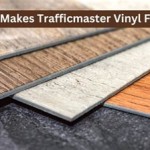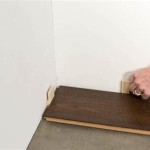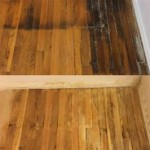Tile Flooring: A Durable and Stylish Choice for Kitchens and Living Rooms
Tile flooring offers a versatile and practical solution for both kitchens and living rooms. Its inherent durability, resistance to moisture, and aesthetic versatility make it a compelling choice for homeowners seeking a long-lasting and visually appealing flooring option. From classic ceramic to contemporary porcelain and natural stone, the variety of tile available allows for a wide range of design possibilities, catering to diverse tastes and architectural styles. This article will explore the benefits, considerations, and types of tile flooring suitable for these high-traffic areas.
The kitchen, often considered the heart of the home, is subjected to spills, foot traffic, and varying temperatures. Similarly, the living room, a space for relaxation and entertainment, experiences consistent use and requires a flooring material that can withstand daily wear and tear. Tile flooring, in its various forms, excels in meeting these demands, providing a robust and easily maintainable surface. The initial investment in tile, while potentially higher than some other flooring options, often translates to long-term savings due to its extended lifespan and minimal maintenance requirements.
Durability and Longevity
One of the primary advantages of tile flooring is its exceptional durability. Unlike materials such as carpet or wood, tile is highly resistant to scratches, dents, and stains. This resilience makes it particularly well-suited for kitchens and living rooms, where heavy furniture, dropped objects, and spills are common occurrences. The dense composition of most tile types prevents the absorption of liquids, further enhancing its resistance to staining and making cleanup a simple task. A properly installed and maintained tile floor can easily last for decades, making it a cost-effective investment in the long run.
The durability of tile is often measured using the Porcelain Enamel Institute (PEI) rating scale. This scale assesses the tile's resistance to surface abrasion, with higher numbers indicating greater durability. For kitchens and living rooms, a PEI rating of 3 or higher is generally recommended, ensuring that the tile can withstand the demands of daily use without showing significant wear and tear. When selecting tile, it is crucial to consider the PEI rating to ensure that it aligns with the expected level of foot traffic and potential for abrasion in the intended space.
Furthermore, the inherent strength of tile contributes to its longevity. Unlike some flooring materials that can warp or bend over time, tile maintains its structural integrity, providing a stable and even surface. This is particularly important in areas with fluctuating humidity levels, such as kitchens, where moisture can cause other flooring types to expand and contract. The dimensional stability of tile ensures that the floor remains level and visually appealing for years to come.
Beyond its resistance to wear and tear, tile is also remarkably resistant to fading. Prolonged exposure to sunlight can cause some flooring materials to lose their color intensity over time. However, the pigments used in tile manufacturing are typically highly resistant to ultraviolet (UV) radiation, ensuring that the floor retains its original color for an extended period. This is particularly beneficial in living rooms with large windows that allow ample sunlight to enter the space.
Maintenance and Cleaning
Another significant advantage of tile flooring is its ease of maintenance. Unlike materials such as carpet or hardwood, tile requires minimal effort to keep clean and looking its best. Regular sweeping or vacuuming to remove loose dirt and debris is typically sufficient for routine maintenance. For more thorough cleaning, a damp mop with a mild detergent is all that is needed to remove spills and stains. The non-porous surface of most tile types prevents the absorption of liquids, making cleanup quick and easy.
Grout, the material used to fill the spaces between tiles, is often the most challenging aspect of tile floor maintenance. Grout can be susceptible to staining and discoloration over time. However, there are several strategies to mitigate this issue. Applying a grout sealer after installation can help to protect the grout from absorbing stains and moisture. Regular cleaning with a grout brush and a specialized grout cleaner can also help to maintain its appearance. Alternatively, epoxy grout, which is inherently stain-resistant and less porous than traditional cementitious grout, can be used to further minimize maintenance requirements.
In addition to regular cleaning, occasional deep cleaning may be necessary to remove accumulated dirt and grime. This can be accomplished using a steam cleaner or a specialized tile and grout cleaner. Steam cleaning is a particularly effective method as it uses high-temperature steam to loosen dirt and kill bacteria without the need for harsh chemicals. When using any cleaning product, it is important to follow the manufacturer's instructions carefully to avoid damaging the tile or grout.
The ease of maintenance associated with tile flooring contributes to its long-term cost-effectiveness. Unlike materials that require frequent professional cleaning or refinishing, tile can be easily maintained by the homeowner with minimal effort and expense. This translates to significant savings over the lifespan of the floor, making tile a financially sound investment.
Design Versatility and Aesthetic Appeal
Tile flooring offers unparalleled design versatility, allowing homeowners to create a wide range of looks and styles in their kitchens and living rooms. Tile is available in a vast array of colors, patterns, sizes, and textures, providing endless possibilities for customization. Whether seeking a traditional, contemporary, or eclectic aesthetic, there is a tile option to suit virtually any design preference. The ability to mix and match different tile types, sizes, and patterns further enhances the design possibilities.
Ceramic tile, a classic and affordable option, is available in a wide range of colors and patterns. Porcelain tile, which is denser and more durable than ceramic, offers even greater design possibilities, including options that mimic natural stone, wood, and concrete. Natural stone tile, such as granite, marble, and slate, adds a touch of luxury and sophistication to any space. Each type of stone has its unique characteristics and aesthetic appeal, allowing homeowners to create a truly custom look.
The size and shape of the tile can also significantly impact the overall appearance of the room. Large-format tiles can create a sense of spaciousness and minimize grout lines, resulting in a sleek and modern look. Smaller tiles, such as mosaics or subway tiles, can add visual interest and texture to the floor. Rectangular tiles can be arranged in various patterns, such as brick or herringbone, to create a unique and eye-catching design. The choice of tile size and shape should be carefully considered to complement the overall architecture and style of the room.
Beyond its aesthetic appeal, tile flooring can also enhance the functionality of the space. In kitchens, tile's resistance to moisture and spills makes it an ideal choice for areas around the sink and stovetop. In living rooms, tile can be used to create a visually distinct zone, such as a fireplace surround or a seating area. The ability to incorporate radiant heat beneath tile flooring provides added comfort and warmth during colder months. This feature is particularly appealing in living rooms, where comfort and relaxation are paramount.
In summary, tile flooring offers a compelling combination of durability, ease of maintenance, and design versatility, making it an excellent choice for both kitchens and living rooms. Its ability to withstand heavy foot traffic, resist spills and stains, and provide a wide range of aesthetic options makes it a valuable investment for homeowners seeking a long-lasting and visually appealing flooring solution.

Kitchen Floor Ideas For Your Home Carpet One

Wood And Tile Floor Transitions Home Design Ideas S Remodel Decor Modern Kitchen Flooring

Open Plan Kitchen Living Areas Which Tiles Should I Choose Blog Pamesa Cerámica Inspiración Consejos Y Másblog Más

Best Tile For Kitchen Floor How To Make The Right Choice

Latest Flooring Trends Hardwood Tile Kitchen Living Room

Tiles Talk Kitchen Flooring Options 5 Unique Designer Perini

Open Concept Flooring With Wood And Tile Living Room Tiles Kitchen Grey Floors

Kitchen Floor Ideas For Your Home Carpet One

Tile Wood Or Laminate How To Choose The Right Floor For You

2024 Kitchen Flooring Trends 20 Ideas To Update Your Style Inc
Related Posts








